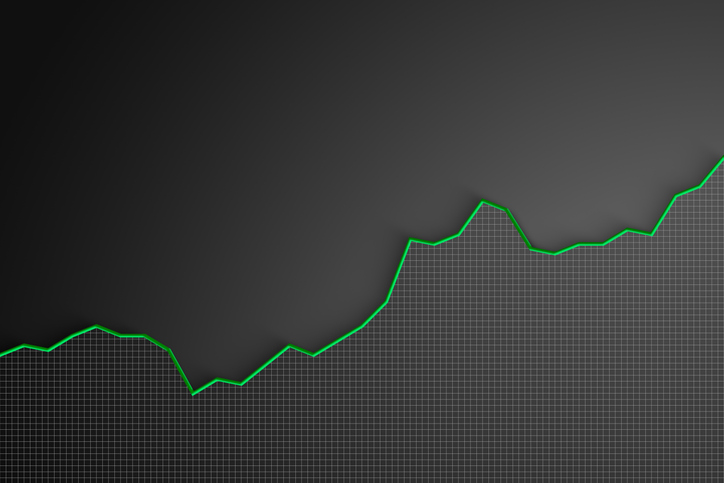Retailers Bank on In-Store Wi-Fi
Go ahead and check out our competition, they say, betting that you won’t bother schlepping to another store after all.
Retailers are making comparison shopping easier for consumers. Really.
By year-end, about 25% of big-box and other anchor retailers, such as department stores, will be offering free in-store Wi-Fi access to shoppers, giving them more opportunities to obtain product information and compare prices using laptops and tablet computers in addition to smart phones. Other, smaller retailers are sure to follow.
That’s an about-face from the former conventional industry wisdom that viewed comparison shopping as leading to lost sales more often than not. But more and more merchants realize that many customers who compare prices or products on a smart phone or laptop stay and buy where they are, saving themselves the hassle of going elsewhere. Meanwhile, a customer who has to leave a store to compare prices may never return.

Sign up for Kiplinger’s Free E-Newsletters
Profit and prosper with the best of expert advice on investing, taxes, retirement, personal finance and more - straight to your e-mail.
Profit and prosper with the best of expert advice - straight to your e-mail.
Retailers saw what free Wi-Fi did for Starbucks and McDonald’s -- it enticed customers to linger longer and spend more. They hope that it will do the same for them. Plus, the broader Wi-Fi availability will take some of the heat off the ever-more-crowded cell phone networks and allow more shoppers easier and often quicker access to information.
The number of public Wi-Fi locations in the U.S. -- that is, not in homes or offices -- increased by 23% in the third quarter of 2010, according to the mobile ad network JiWire, which provides the broadest listing of Wi-Fi locations. About 54% of those locations offer the service free.
Expanded Wi-Fi networks can benefit specialized retailers as much as the big boys. For example, a network can act as a virtual expansion of a small specialty store, says Kasey Lobaugh, a principal with Deloitte Consulting.
“The [merchandise] assortments they keep on hand are relatively constrained from a square footage standpoint,” Lobaugh says. But on-the-spot access to an e-commerce site can offer consumers a wider range of products and ensure that their purchase comes from that retail outfit. Plus, retailers can push discounts or other store-specific offers at shoppers who access the Wi-Fi network through a store’s individual portal, or home page.
Installing an in-store Wi-Fi network can be as easy as hooking up a modem and a router. But stores of all sizes must make sure that their back-end Internet connections, or their “enterprise networks” -- the ones that they use to house transaction data, inventory information and the like -- are secure and kept separate from their open network for consumers.
Get Kiplinger Today newsletter — free
Profit and prosper with the best of Kiplinger's advice on investing, taxes, retirement, personal finance and much more. Delivered daily. Enter your email in the box and click Sign Me Up.
-
 Stock Market Today: Stocks Soar on China Trade Talk Hopes
Stock Market Today: Stocks Soar on China Trade Talk HopesTreasury Secretary Bessent said current U.S.-China trade relations are unsustainable and signaled hopes for negotiations.
By Karee Venema
-
 2026 Disney Dining Plan Returns: Free Dining for Kids & Resort Benefits
2026 Disney Dining Plan Returns: Free Dining for Kids & Resort BenefitsPlan your 2026 Walt Disney World vacation now. Learn about the returning Disney Dining Plan, how kids aged three to nine eat free, and the exclusive benefits of staying at a Disney Resort hotel.
By Carla Ayers
-
 The Economic Impact of the US-China Trade War
The Economic Impact of the US-China Trade WarThe Letter The US-China trade war will impact US consumers and business. The decoupling process could be messy.
By David Payne
-
 AI Heads to Washington
AI Heads to WashingtonThe Kiplinger Letter There’s big opportunity for AI tools that analyze MRIs and other medical images. But also big challenges that clinicians and companies will have to overcome.
By John Miley
-
 The AI Doctor Coming to Read Your Test Results
The AI Doctor Coming to Read Your Test ResultsThe Kiplinger Letter There’s big opportunity for AI tools that analyze CAT scans, MRIs and other medical images. But there are also big challenges that human clinicians and tech companies will have to overcome.
By John Miley
-
 The New Space Age Takes Off
The New Space Age Takes OffThe Kiplinger Letter From fast broadband to SOS texting, space has never been more embedded in peoples’ lives. The future is even more exciting for rockets, satellites and emerging space tech.
By John Miley
-
 Rising AI Demand Stokes Undersea Investments
Rising AI Demand Stokes Undersea InvestmentsThe Kiplinger Letter As demand soars for AI, there’s a need to transport huge amounts of data across oceans. Tech giants have big plans for new submarine cables, including the longest ever.
By John Miley
-
 What DOGE is Doing Now
What DOGE is Doing NowThe Kiplinger Letter As Musk's DOGE pursues its ambitious agenda, uncertainty and legal challenges are mounting — causing frustration for Trump.
By Matthew Housiaux
-
 A Move Away From Free Trade
A Move Away From Free TradeThe Letter President Trump says long-term gain will be worth short-term pain, but the pain could be significant this year.
By David Payne
-
 The Explosion of New AI Tools
The Explosion of New AI ToolsThe Kiplinger Letter Workers and consumers soon won’t be able to escape generative AI. Does that mean societal disruption and productivity gains are right around the corner?
By John Miley